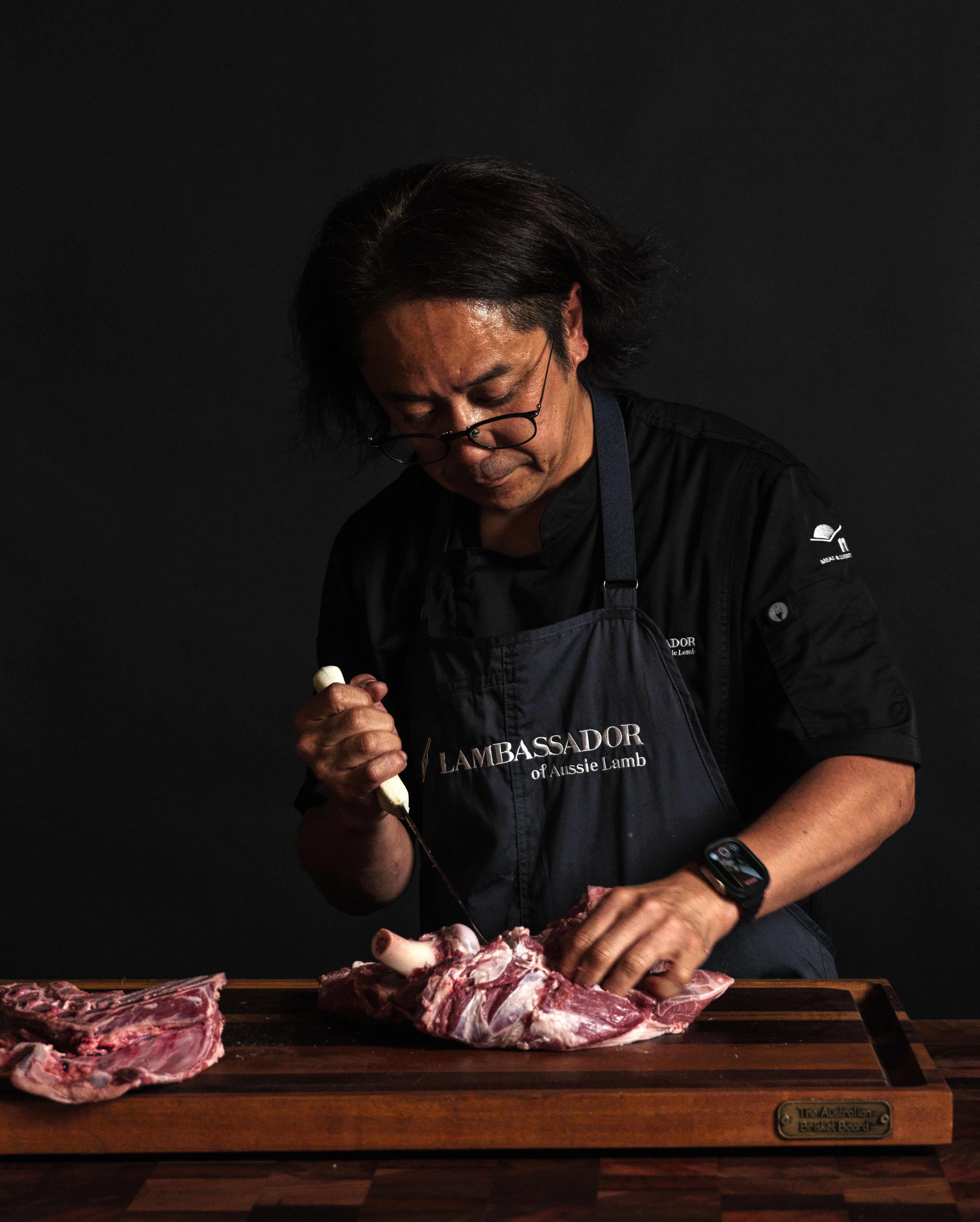
In Japan, beef, chicken and pork have long dominated the market, but in recent years, lamb is gaining popularity. Toyo Meat Co., a Hokkaido-based family business established in 1928, is recognised across Japan for its craftsmanship and creative approach to lamb.
Master butcher Moriaki Higashizawa has created a reputation as a specialty butcher for lamb and mutton. In Japan, there are around 30,000 licensed butchers, but only a handful, including Mori, specialise in lamb.
As an MLA Lambassador, Mori has travelled from Perth to Sydney, exploring Australia’s paddock-to-plate journey alongside fellow chefs and butchers. It’s a chance for him to connect the dots between Australian producers and Japanese consumers, and to share insights from a country where butchery is viewed as both a trade and an art form.
“Japanese butchery follows a philosophy of harmony and respect,” Mori says. “We see meat not just as food, but as a living structure to be understood and honoured. Precision in cutting maximises umami [the savoury depth of flavour] while showing respect for the animal.”
Mori’s shop offers everything from traditional cuts used in Genghis Khan-style BBQ – Hokkaido’s signature dish cooked on a domed hotplate – to inventive creations such as smoked lamb heart ham, lamb prosciutto and Hokkaido-vegetable sausages.
Every Toyo Meat Co. product aims to balance tradition with innovation. Mori still hand cuts most of his lamb using Japanese blades such as the gyuto and sujihiki, guided by feel. The ideal cutting temperature, he says, is between –1°C and +1°C, where he says the meat is firm yet supple enough for a smooth blade glide.
“I tell young butchers to feel how the blade moves through the meat,” he says. “It’s a skill no textbook can teach, only something experience can refine.”
That precision matters in Japan, where thinly sliced chuck roll for sukiyaki (hotpot) or loin for yakiniku (Japanese-style BBQ grilled at the table) depends on the exact angle and grain of the cut to maximise tenderness and umami. Even a few degrees difference can change the mouthfeel entirely.
Mori’s craft draws on five years of apprenticeship under his father and senior craftsmen. But his curiosity keeps him evolving.
“I always try to respect classical technique while exploring new expressions,” he says. That includes experiments such as lamb sushi, lamb katsu curry and ramen made from lamb bone broth, dishes that blend Japanese culinary heritage with the distinctive character of Australian lamb.
Mori’s approach is a reminder that handling plays a role alongside other characteristics such as origin and marbling.
“Customers come to us for trusted flavour, clear provenance and expert advice. Many are chefs and food lovers seeking exceptional lamb that expresses its ‘terroir’, the sense of the place where it was raised,” Mori says.
“We aim to share the joy of discovering new ways to appreciate lamb.”
About the Lambassador program
The Lambassador program connects international chefs, butchers and food influencers with Australian producers and processors, offering a first-hand look at the journey from paddock to plate. Through this experience, participants share their discoveries with consumers back home, promoting the quality, provenance and versatility of Australian lamb to the world.

